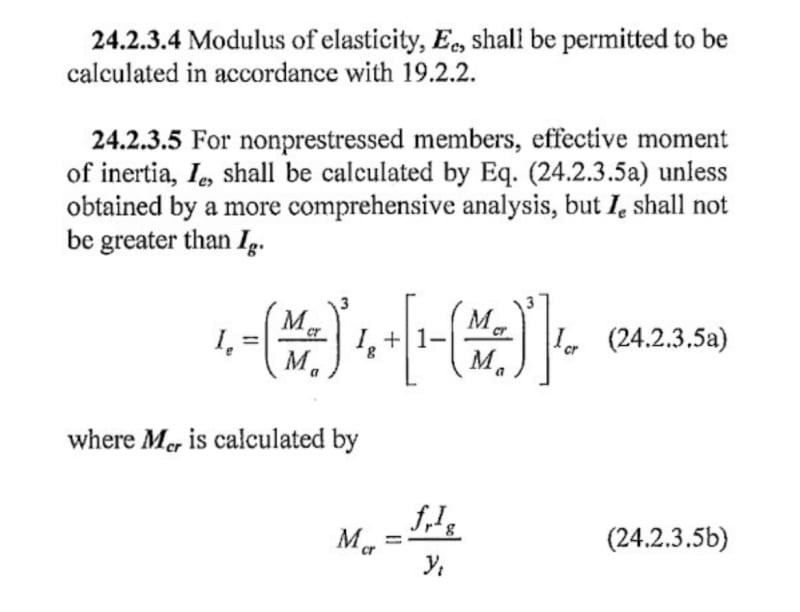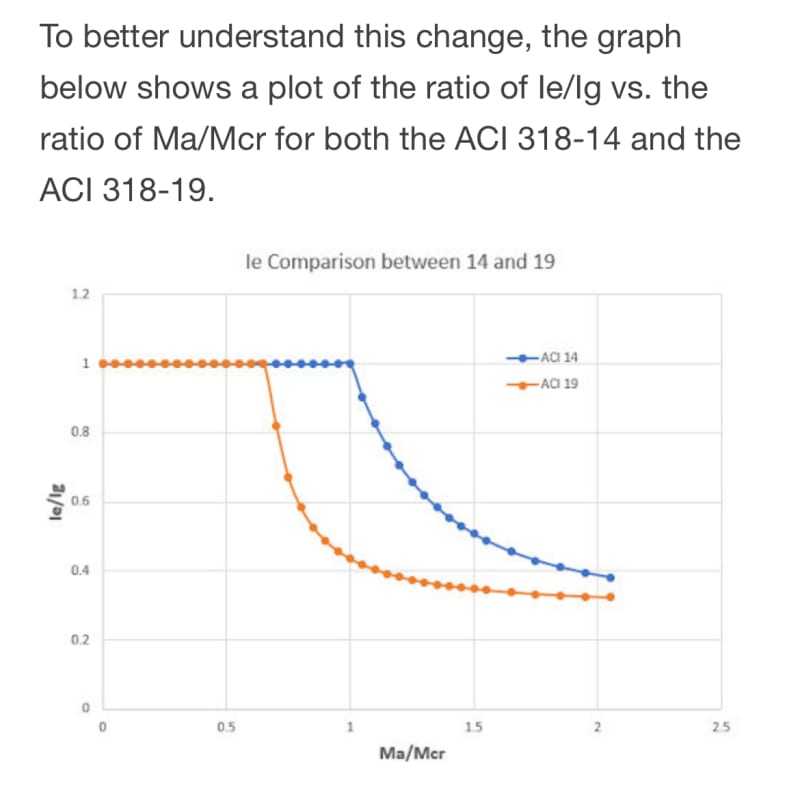GA_Engineer
Structural
I was wondering if anyone else had come across the slight change in ACI 318-19 to the calculation for the effective moment of inertia for non-prestressed sections. I ran across it while trying to replicate an existing design but using the new code and my concrete beam deflections shot way up. After looking into the code a bit further, I determined that the new equation will change the deflection for concrete beams depending on the applied moment. Based on the graph below, there is a pretty good sized reduction in effective moment of inertia with the new equation. I hadn’t seen a discussion on this new change but it could become a big deal since we will have to make some beams larger to meet deflection criteria that in similar situations worked as small beams using older code. Owners and GCs won’t like that. The first image below is from ACI 318-19 and the second from ACI 318-14. I found some more information here:







